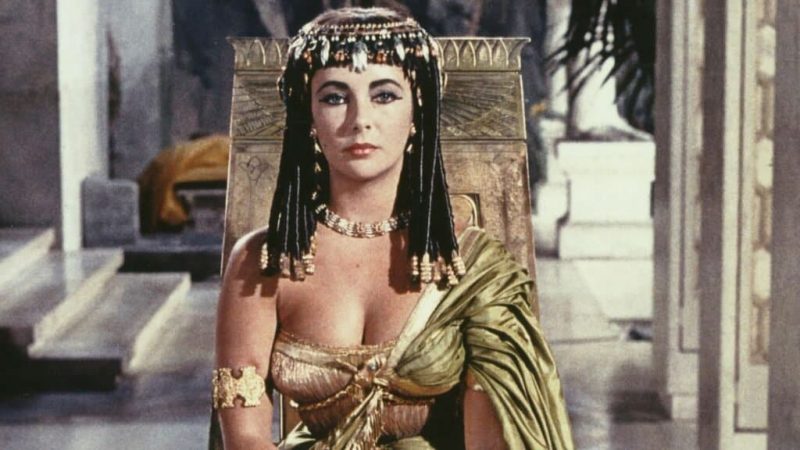Cleopatra: The Charming Macedonian Greek Ruler of Egypt

There has been controversy lately regarding the ethnic origins of Cleopatra. Since the Superwoman actress Gal Gadot announced she will play Cleopatra in an upcoming Hollywood movie many Egyptians and Arabs have been bashing her on social media. Fans of Gal Gadot have defended the Israeli actress on social media saying “Cleopatra was not black or Arab, she was Greek!”
“To be true to the facts, Cleopatra was Macedonian (Greek). We were looking for a Macedonian (Greek) actress that could fit Cleopatra. She wasn’t there, and I was very passionate about Cleopatra.”- said the Israeli actress Gal Gadot in an interview with BBC.
History tells us that Cleopatra was not Egyptian as many Egyptians have been claiming on social media. Cleopatra was Macedonian Greek, (no not that little Slavic Vardaska country that is now being called North Macedonia outside of Greece). Cleopatra was from Macedonia, in Northern Greece, and part of the Ptolemaic Dynasty of Ptolemy I Soter, one of the generals of Alexander The Great.
After the death of Alexander in 323 B.C., Ptolemy took over the reins of Egypt and began a dynasty of Greek-speaking rulers that lasted almost three centuries. Cleopatra, while not being ethnically Egyptian, followed many of the ancient traditions of her country and was the first member of the Ptolemaic line to study the Egyptian language.
Moreover, members of the Ptolemaic dynasty were incestual. They would frequently marry within the family to maintain the purity of their bloodline. Many of the ancestors of Cleopatra tied the knot with cousins or siblings, and her parents were brother and sister. Cleopatra married both of her younger brothers, both of whom acted as her husband, by following tradition.
Cleopatra has been presented as a sexy temptress as Roman propaganda who used her sex appeal as a political tool, but she may have been more known for her intelligence rather than her good looks. She spoke more than a dozen languages and studied mathematics, philosophy, and astronomy. She was known to be charming and very desirable, however, not as beautiful as Elizabeth Taylor in the classic Hollywood movie.

Some crazy Cleopatra historical facts you may not know:
She wasn’t Egyptian. She was Macedonian Greek.
She later married both of her younger brothers..
She wasn’t as beautiful as portrayed in movies.
She had her brother poisoned and her sister executed.
She knew theatrics and how to make grand entrances.
She formed a drinking club with Mark Antony.
She was in Rome when Caesar was assassinated.
Her daily bath required a tub and 700 lactating donkeys.
(Donkey milk was used as an anti-aging procedure. Botox was not around then.)
It is very likely that her parents were brother and sister
She is likely to have died of suicide from drinking poison and not from a snake bite.
Historians have composited a 3D model of what Cleopatra really looked like. She was known to be blessed with intelligence and charisma rather than physical beauty.
Words you thought were Egyptian but are really Ancient Greek.
Egypt comes from the Greek Aegyptos
Memphis (Μέμφις) is the Greek adaptation of the name that they had given to the pyramid of Pepi I, located west of the city.
Hieroglyphic (from the Greek word for “sacred carving”) is first encountered in the writings of Diodorus Siculus (1st century bce). Earlier, other Greeks had spoken of sacred signs when referring to Egyptian writing.
Petroglyphs comes from the Greek prefix petro-, from πέτρα petra meaning “stone”, and γλύφω glýphō meaning “carve”.
Necropolis (plural necropolises, necropoles, necropoleis, necropoli) is a large, designed cemetery with elaborate tomb monuments. The name stems from the Ancient Greek νεκρόπολις nekropolis, literally meaning “city of the dead”.
Sarcophagus comes from the Greek σάρξ sarx meaning “flesh”, and φαγεῖν phagein meaning “to eat”; hence sarcophagus means “flesh-eating”, from the phrase lithos sarkophagos (λίθος σαρκοφάγος), “flesh-eating stone”.
Sphinx was derived by Greek grammarians from the verb sphingein (“to bind” or “to squeeze”), but the etymology is not related to the legend and is dubious.
Pharaoh is the Greek form of the Egyptian pero or per-a-a, which was the designation for the royal residence and means `Great House’.
Phoenix ancient Greek folklore, a phoenix is a long-lived bird that cyclically regenerates or is otherwise born again.
Pyramid actually comes from the Greek word ‘pyramis’ which means ‘wheat cake’. The word ‘pyramis’ was used to describe the ancient Egyptian buildings because they reminded the Greeks of pointy-topped wheat cakes. The ancient Egyptian word for the pyramids was ‘Mer’.
Isis, Egyptian Aset or Eset, one of the most important goddesses of ancient Egypt. Her name is the Greek form of an ancient Egyptian word for “throne.”
Caesar, from Greek: long haired ; hairy Καῖσαρ Kaîsar) is a title of imperial character.
Horus Late Latin from Greek Hōros, from Egyptian Hur hawk.
Osiris is a Latin transliteration of the Ancient Greek Ὄσιρις IPA: [ó.siː.ris], which in turn is the Greek adaptation of the original name in the Egyptian language.
Anubis is the Greek form of the Egyptian Anpu (or Inpu) which meant “to decay” signifying his early association with death.
Ptah the name was also borrowed early on into Greek as Φθα Phtha.
Seth from Σήθ (Seth), the Greek form of Egyptian swtẖ or stẖ (reconstructed as Sutekh), which is of unknown meaning. Seth was the Egyptian god of chaos and the desert, the slayer of Osiris
Hathor cow-goddess of love and joy in ancient Egypt, identified by the Greeks with their Aphrodite, from Greek Hathor, from Egyptian Het-Heru “mansion of Horus,” or possibly Het-Herh “the house above.”
Africa is a derivation of the Greek word “aphrikē,” which translates as “the land that is free from cold and horror.”
Tomb from Greek tymbos “mound, burial mound,” generally “grave, tomb.”
Roman is a masculine given name that originated within the Roman Empire, via Latin and sequentially the Greek language.
Ethiopia derived from the Greek word Αἰθιοπία Aithiopia, from Αἰθίοψ Aithiops ‘an Ethiopian’, derived from Greek terms meaning “of burnt ( αιθ-) visage (ὄψ)”.
Libya the country next to Egypt (from Greek Λιβύη: Libyē, which came from Berber: Libu)





